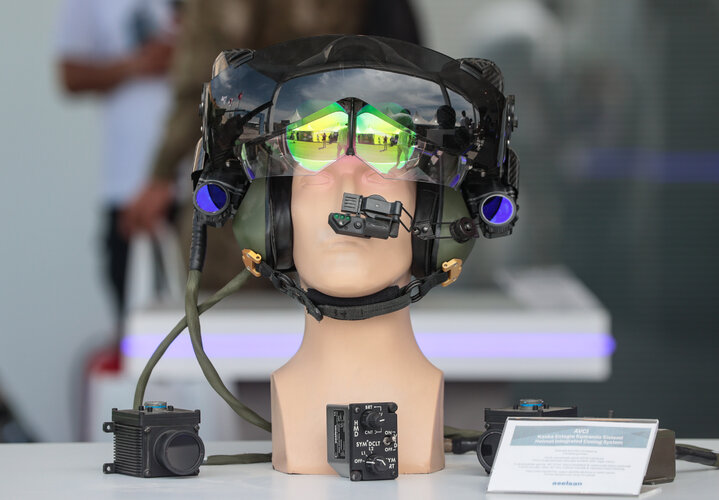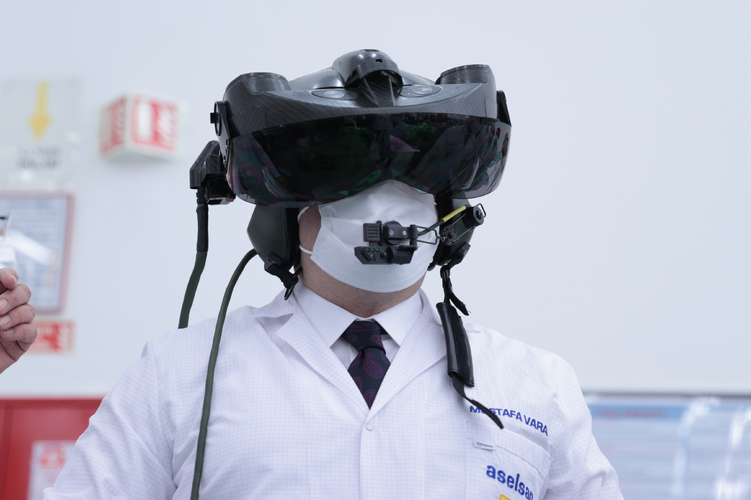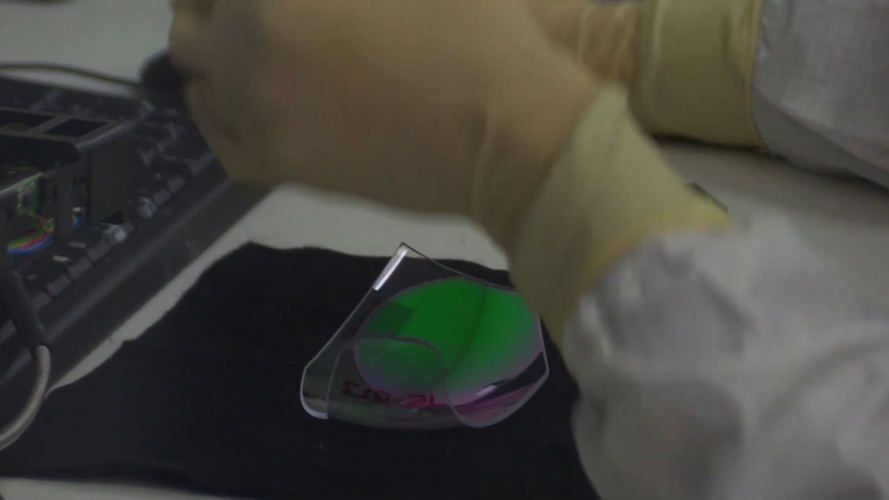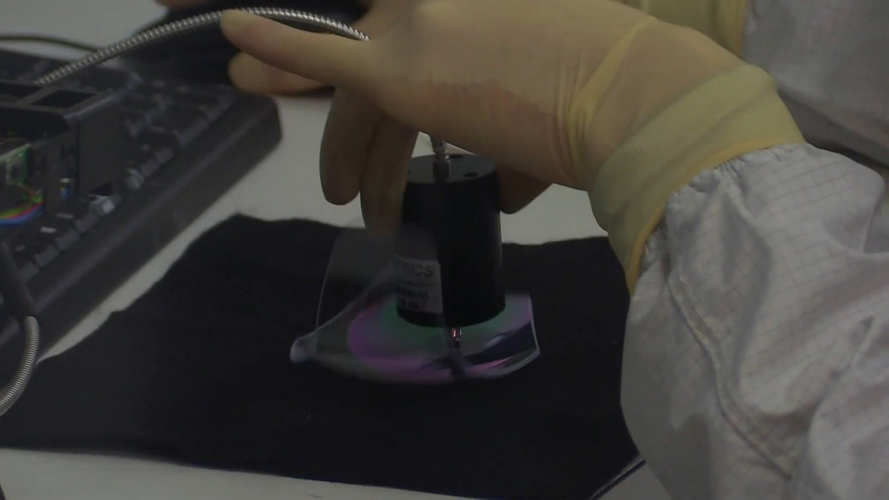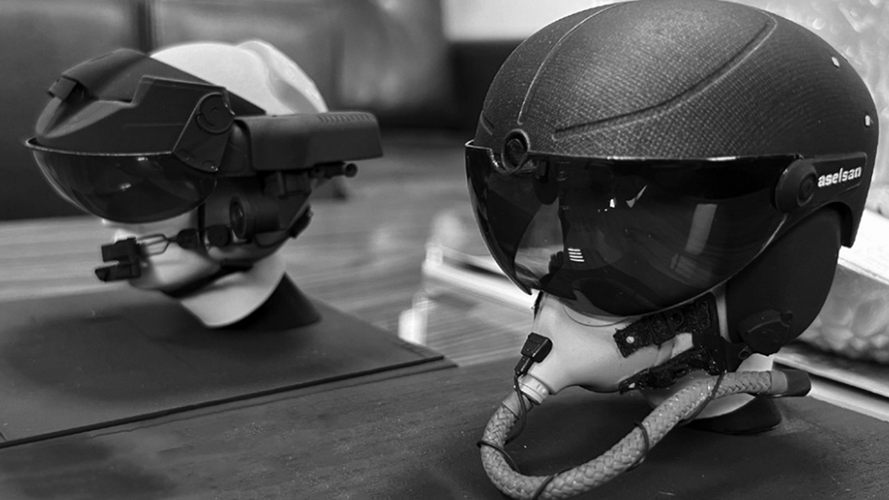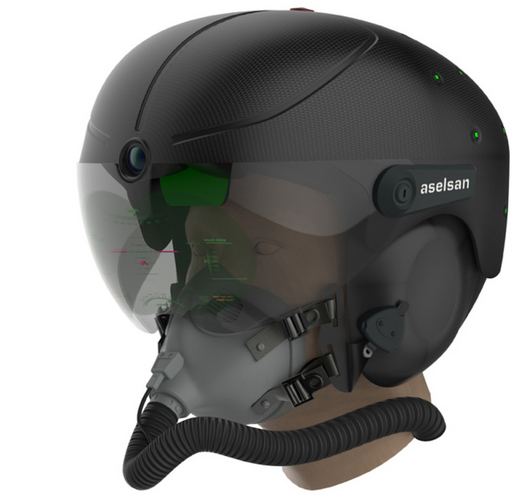TULGAR System is a helmet-mounted display system designed by ASELSAN for fixed-wing platforms. It incorporates digital night vision, color display, and precise head tracking technologies to enhance the pilot's awareness of the aircraft's capabilities and the mission area.
System Subunits:
• Helmet Unit
• Electronic Unit
• Head Tracking Module
Thanks to its advanced optical design, the TULGAR system provides a wide field of view and high-resolution images reflected onto the visor to support pilots during the mission. The helmet unit is made of lightweight composite materials and an inner shell customized for the user to provide an ergonomic solution to pilots. Active and passive noise-canceling capabilities prevent noise from the platform and other sources from reaching the pilot.
The integrated digital night vision capability of the system enables it to be used without requiring any changes to the helmet unit during both day and night missions.
The TULGAR System is suitable for fixed-wing platforms and is ready for use in challenging environmental conditions due to its durable design.
General Specifications:
• Lightweight helmet unit
• Color display
• Interior helmet structure shaped according to pilot's head
• Digital night vision
• Hybrid head tracking system
• Active noise cancellation
• Compatibility with wearing glasses
• 3D sound compatibility
• 40°(Y)-32°(D) field of view
Interfaces:
• ARINC-818-2 Video Interface
• Display Port Digital Video I/O Interface
• Serial Interfaces (RS-232/RS-485/RS-422)
• Discrete I/O Interface
• MIL-STD-1553 Interface
Physical Specifications:
• Helmet Unit Weight: < 2.1 kg (including oxygen mask)
• Electronic Unit (EU) Weight: < 5 kg
Technical Specifications:
• Power Input: 28 VDC (Nominal)
• Power Consumption: 140 W (Nominal)/190W (Maximum)
Environmental Conditions:
• Operating Temperature (EU): -40°C/+70°C (Fan Cooled)
: -55°C/+95°C (Climate Controlled Air Cooled)
• Storage Temperature (EU): -55°C / +95°C
Qualifications:
• MIL-STD-810G W/Change 1
• MIL-STD-461G
• MIL-STD-1472G
• DO-254
• DO-178C
3D Audio Technology is a technology that enables communication channels and voice warnings to be transmitted to stereo headphones with spatial cues in avionics intercom systems.
ASELSAN's 3D Audio Technology is based on HRTF (Human Related Transfer Function). 3D Audio is created spatially based on the location information of the warning and the head movements of the pilot. So the sound is transmitted as if it is coming from above, below, right or left.
Thanks to 3D Audio technology, the pilot's environmental awareness increases, response time and workload decrease.
Radio separation is created using 3D Audio. Communication channels are transmitted to the pilot from different angles so that the pilot can easily distinguish between channels.
3D Audio Features
• Real-Time Operation
• Radio Separation
• Directional Warning
• Global Positioning
• Reduced Response Time
• Reduced Workload
• Increased Environmental Awareness




